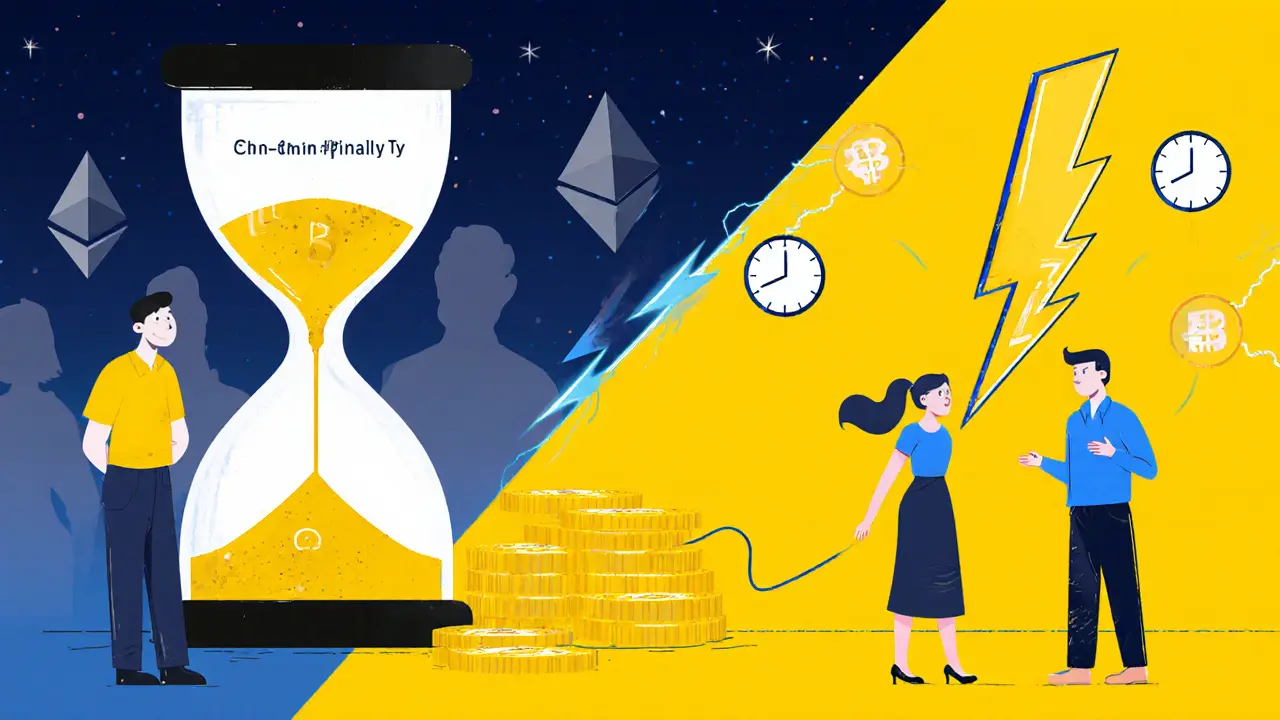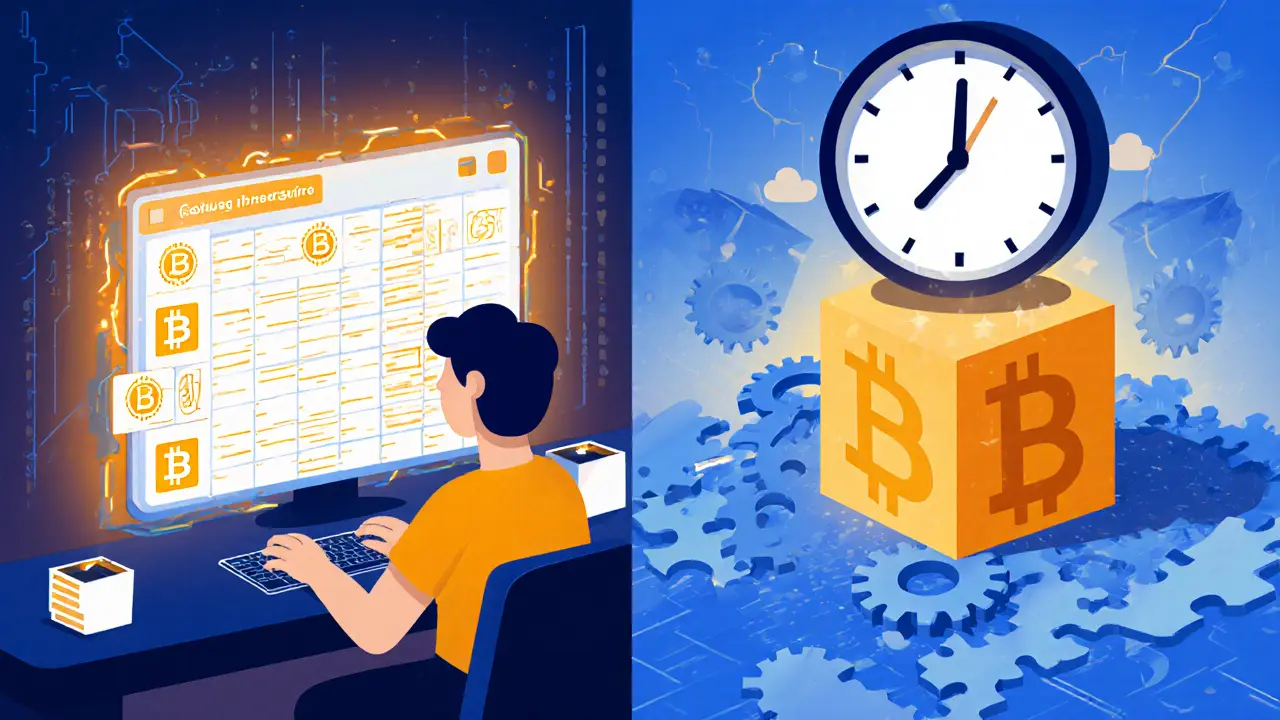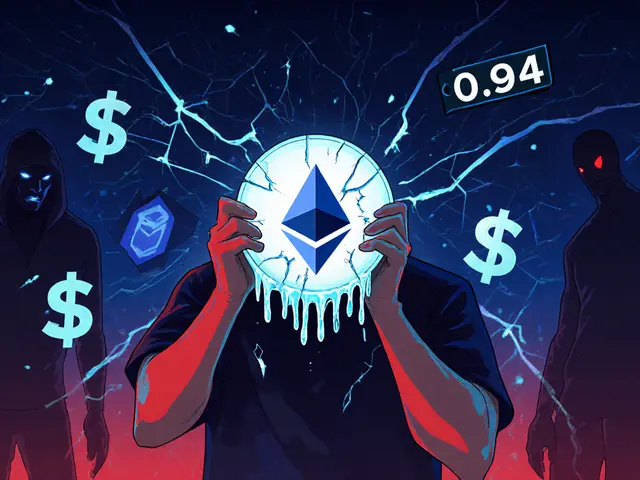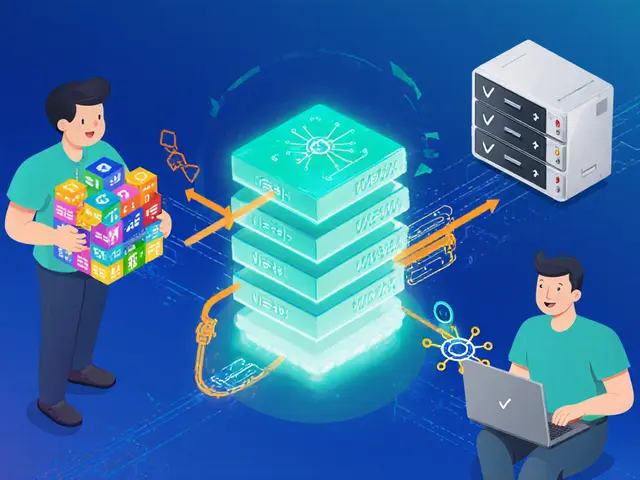Bitcoin Finality Calculator
Enter values and click Calculate
Understanding Bitcoin Finality
Bitcoin finality is probabilistic. Each confirmation exponentially reduces the risk of transaction reversal. The industry standard is 6 confirmations (~60 minutes) for high-security transactions.
When you send money over the Bitcoin a decentralized proof‑of‑work cryptocurrency, you’re creating a transaction a record of value transfer that must be added to the blockchain. Unlike a bank transfer that can clear in seconds, Bitcoin needs time for the network to agree that the transaction is legitimate and irreversible. That waiting period is called Bitcoin finality, and it’s the core topic of this guide.
Quick Summary
- Bitcoin’s average block time is ~10 minutes.
- One confirmation = transaction included in a mined block.
- Six confirmations (≈60minutes) are the industry standard for "final" settlement.
- Finality is probabilistic: each new block reduces the chance of reversal exponentially.
- Layer‑2 solutions like the Lightning Network can give instant finality for small payments.
What Is Transaction Finality?
Finality is the moment a transaction becomes effectively irreversible. In Bitcoin, finality isn’t absolute the instant a block is mined; instead, each subsequent block a batch of transactions secured by proof‑of‑work adds another layer of security. The more blocks that sit on top of your transaction, the higher the economic cost for an attacker to reorganize the chain and erase it.
How Bitcoin Achieves Probabilistic Finality
The backbone of Bitcoin’s security is Proof‑of‑Work a consensus mechanism that requires miners to solve a computational puzzle. When a miner solves the puzzle, they broadcast a new block. Every block adds roughly 10minutes of work, and the total work required to rewrite history grows exponentially with each added block. This creates a “security budget” - the combined cost of electricity and hardware that an attacker would have to outspend.
Because miners are incentivized by block rewards and transaction fees, the network’s total hash rate (computational power) stays high. The probability that a malicious actor can produce an alternative chain that overtakes the honest chain drops dramatically after each confirmation. By the time six blocks are stacked, the cost of a successful double‑spend becomes astronomical for any rational attacker.
Why Six Confirmations Became the Standard
Early Bitcoin users experimented with fewer confirmations, but real‑world exchanges and services adopted six as a safety margin. Here’s the math in plain terms:
- 1 confirmation = your transaction is in the latest block. Still vulnerable to a 51% attack.
- 2-3 confirmations = attacker must rewrite 2-3 blocks, requiring double the hash power each time.
- 4-5 confirmations = the cost climbs into the billions of dollars for today’s network.
- 6 confirmations ≈ 60minutes → the likelihood of a successful reorg drops below 0.001%.
Most major exchanges (Coinbase, Binance, Kraken) only credit deposits after they see 3-6 confirmations, matching the risk tolerance of their users and regulators.

Real‑World Timing: Block Time vs. Finality Time
Bitcoin’s average block time hovers around 10minutes, but network congestion can push it to 12-15minutes during peak periods. If you’re paying a low fee, your transaction might sit in the mempool for several blocks before it’s included. In practice, the total time from broadcast to six confirmations often lands between 45minutes and 2hours.
Compare that with newer chains:
| Network | Consensus | Typical finality |
|---|---|---|
| Bitcoin | Proof‑of‑Work | ≈60minutes (6 confirmations) |
| Ethereum (post‑Merge) | Proof‑of‑Stake | ≈5-7minutes (finality checkpoint) |
| Sei Network | Twin‑Turbo | ≈0.4seconds |
| Lightning Network (Bitcoin L2) | Off‑chain payment channels | Instant (seconds) |
The gap isn’t a flaw-it’s a conscious trade‑off. Bitcoin favors security and decentralization; faster chains prioritize speed.
Impact on Users, Merchants, and Institutions
For everyday users who just want to move a few dollars, waiting an hour can feel frustrating, especially when you compare it to a Visa transaction that clears in seconds. Retail merchants therefore rarely accept Bitcoin directly for low‑value sales.
Institutions, on the other hand, view the longer finality as insurance. Large‑value transfers (think multi‑million‑dollar settlements) benefit from the immutability that six confirmations provide. The extended window also satisfies regulators that demand robust anti‑fraud controls.
In the DeFi world, the delay influences cross‑chain bridges and atomic swaps. A bridge that moves assets from Bitcoin to another chain must wait for six confirmations before it can safely release the counterpart tokens, adding latency that developers have to account for in their UI/UX.
Ways to Speed Up Settlement Without Compromising Security
There are three practical levers you can pull:
- Higher transaction fees: Paying a competitive fee pushes miners to include your transaction in the next block, shaving 10‑15minutes off the wait.
- Use of the Lightning Network: By opening a payment channel, you can settle instantly. The channel’s on‑chain commitment is still secured by Bitcoin’s proof‑of‑work, but the day‑to‑day transfers happen off‑chain.
- Batching and Replace‑by‑Fee (RBF): If you need to move many outputs, batching reduces overall congestion. RBF lets you bump the fee if a transaction gets stuck.
Even with these tactics, the base layer’s six‑confirmation rule remains a best practice for any transfer worth more than a few hundred dollars.
Future Outlook: Will Bitcoin’s Finality Change?
Core developers have discussed proposals to shorten block time or modify the confirmation threshold, but any change requires broad consensus-something notoriously hard to achieve in a decentralized network. The 2021 Taproot upgrade improved script efficiency and privacy, but it didn’t alter block timing.
Layer‑2 innovations like Lightning and sidechains (e.g., Liquid) are the primary avenue for faster settlement while keeping Bitcoin’s base‑layer security untouched. As these ecosystems mature, we’ll likely see more merchants offering instant Bitcoin payments alongside the traditional on‑chain flow.
In short, expect the six‑confirmation, ~60‑minute finality to stay the norm for on‑chain transactions for the foreseeable future.
Key Takeaways
- Bitcoin’s finality is probabilistic, not instantaneous.
- Six confirmations (~60minutes) are the industry standard for “final” status.
- The security comes from the exponential cost of rewinding the blockchain.
- Higher fees, Lightning, and RBF can reduce perceived latency.
- Future changes are more likely to happen on Layer‑2 than on the base protocol.

Frequently Asked Questions
How long does a Bitcoin transaction stay pending?
If you pay a market‑rate fee, the transaction usually lands in the next block, about 10minutes. Lower fees can push it to 30minutes or more, depending on network congestion.
Is it safe to accept zero‑confirmation Bitcoin payments?
Zero‑conf transactions are vulnerable to double‑spend attacks, especially when the network is congested. Most reputable merchants wait for at least 1-3 confirmations, and high‑value trades wait for 6.
Can I force a transaction to confirm faster?
Yes. Use a higher fee, enable Replace‑by‑Fee (RBF) to bump the fee later, or move the transaction to the Lightning Network where settlement is instantaneous.
Why does Bitcoin need six confirmations instead of one?
Each additional block raises the computational cost for an attacker to rewrite history. Six confirmations push that cost beyond the reach of any rational adversary, making the transaction effectively irreversible.
What’s the difference between Bitcoin’s finality and Ethereum’s finality?
Ethereum uses proof‑of‑stake and a finality checkpoint that finalizes blocks roughly every 5‑7minutes. Bitcoin relies on proof‑of‑work and needs multiple 10‑minute blocks, resulting in a longer finality window.












People Comments
Oh wow, the whole idea of waiting an hour for Bitcoin to finally settle feels like watching paint dry on a masterpiece. It's as if the network is whispering, “Patience, mortal,” while we stare at the blinking confirmation counter. Six confirmations? That's the holy grail, the number that separates the bold from the bored. And yet, we keep tossing our coins into this slow‑burning furnace, hoping for that sweet, sweet finality. The excitement is palpable-if you can call a 10‑minute block interval exhilarating. Anyway, the guide does a decent job, but could use a sprinkle of drama to match the suspense.
While your dramatization captures attention, it overlooks the essential economic rationale behind Bitcoin’s confirmation model. The six‑confirmation standard is not an arbitrary tradition but a quantifiable risk mitigation threshold based on current hash‑rate statistics. By presenting it as mere suspense, the analysis dilutes the critical security arguments that underpin the protocol. Moreover, the article should emphasize that the probabilistic nature of finality is a function of network difficulty, not a narrative device. A more rigorous treatment would compare the exponential decay of double‑spend probability across each block, offering readers concrete figures rather than poetic flair.
The article completely glosses over the inherent insecurity of relying on probabilistic finality.
Great summary, thanks! The breakdown of confirmation counts really helps demystify why merchants wait for six blocks. Your section on Lightning as a speed‑up option is spot on, and I’d add that even small‑fee bumps can shave off a block or two in most cases. Overall, a solid primer for newcomers.
Cool stuff, love the table. 😊
Nice work, the casual tone makes a dense topic feel accessible.
What a vibrant tapestry you’ve woven around the seemingly mundane concept of transaction finality! First, you capture the essence of Bitcoin’s probabilistic security model with a clarity that even a newcomer can grasp. Then, you usher us through the gritty math, showing how each successive block adds an exponential layer of defense against double‑spend attacks. I love how you juxtapose the austere, six‑confirmation rule with the sleek, near‑instant promise of the Lightning Network, reminding us that both worlds coexist in harmony. Your historical anecdotes about early adopters experimenting with fewer confirmations add a delightful human flavor. The comparison table is a masterstroke, painting a vivid contrast between Bitcoin and its faster siblings like Ethereum and Sei. Moreover, the practical tips-higher fees, RBF, batching-translate theory into actionable steps for any user. Your nod to future possibilities, especially the cautious optimism surrounding protocol upgrades, feels both realistic and hopeful. By the end, readers are not just informed; they’re empowered to make smarter, faster, and safer transactions. Bravo for turning a technical deep‑dive into an engaging, colorful journey through the cryptographic frontier.
Alright, enough with the flowery fluff-six confirmations are a pain, and anyone who nags about it needs a reality check. If you want speed, stop pretending Bitcoin is the only game in town and actually use Lightning. Stop romanticising a protocol that’s literally built for delay.
People think six confirmations are overkill, but it’s just a myth fed by hype.
From a regulatory standpoint, the six‑confirmation benchmark furnishes a defensible security margin that aligns with anti‑money‑laundering protocols and fiduciary risk assessments. It thereby satisfies both domestic and trans‑national supervisory expectations, rendering it a cornerstone of compliance frameworks for custodial entities.
Honestly, who cares about 60 minutes? Just send it and move on, the world’s moving faster anyway.
i get u, but rly its better 2 wait 6 confs for big sumz. dont wanna get scammed lol
Spot on! The guide nails the balance between security and usability. If you’re new, start with a higher fee and consider Lightning for tiny everyday payments. Happy transacting!